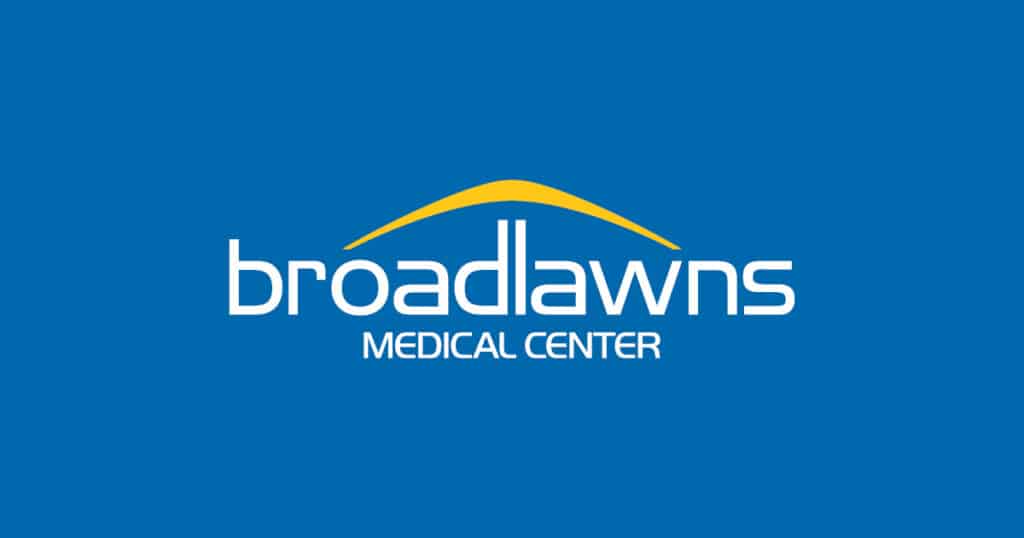Squeezing health-care costs
A majority of Iowa hospitals are using lean techniques to increase efficiency, improve care

When Dr. Tom Evans began promoting “lean” techniques to Iowa hospitals in 2006, some administrators might have thought he was talking about a new weight-loss plan.
Since then, hospitals’ use of lean techniques has advanced from a handful of early adopters to a mainstream quality improvement tool. According to a statewide survey conducted in 2011, more than 70 percent of Iowa’s 118 hospitals said they were using lean techniques, up from 50 percent in 2008. And if they’re anything like Greater Des Moines’ two major hospital systems, Iowa hospitals are likely saving millions of dollars a year by employinging lean practices.
This year, they will have a chance to test their skill at applying lean techniques through participation in a national quality improvement initiative known as the Hospital Engagement Network. The Iowa Healthcare Collaborative was one of 26 organizations nationwide selected for the three-year pilot program.
“It’s about boots-on-ground, rapid-cycle performance improvement,” said Evans, president and CEO of the collaborative, a nonprofit organization focused on improving health-care quality in the state. The initiative will focus on carrying out 10 specific objectives that are part of a National Quality Strategy announced last year by the U.S. Department of Health and Human Services. “Iowa took it pretty seriously,” Evans said, noting that he believes Iowa was the first state to have all of its hospitals sign up for the program.
“The cool thing is we’ve been teaching the hospitals how to block and tackle, and now we’re going to go play the game,” he said.
Reducing waste
Originally developed by Toyota Motor Corp. to streamline its manufacturing processes, lean has evolved into a process management philosophy that has been adopted by a number of industries, including health care. Lean techniques focus on speeding up processes and reducing waste by identifying and eliminating steps or activities that don’t add value.
Though lean has been around for the past three decades in manufacturing, its use in driving health-care performance improvement has been much more recent. In fact, many of the lean specialists working at hospitals around the state have been hired from manufacturing companies within the past six years. They’re now applying skills once devoted to making factory floors more efficient to health-care challenges such as decreasing patients’ waiting times in emergency rooms.
Because of lean’s relative simplicity, “it’s something that can be picked up by the leadership of the organization, and if the leadership picks it up, you can really go far,” Evans said.
Process improvement is what the Iowa Healthcare Collaborative is all about. Formed in 2005 through a partnership of the Iowa Hospital Association and the Iowa Medical Society, the organization’s focus is continuous improvement of Iowa’s hospitals. Among the collaborative’s products are an annual online report that provides detailed quality measures based on monthly reports from all of the state’s hospitals. The searchable database currently provides data on 73 separate quality measures for hospitals.
To assist smaller hospitals in the state that don’t have the resources to staff their own lean teams, the collaborative hired Dean Bliss, a former Rockwell Collins Inc. engineer, to serve as an in-house lean coach. In March, Bliss will begin a three-session series to provide hospitals with a primer on lean techniques, with an emphasis on sharing best practices.
“We want to tell stories about hospitals that are doing things well,” Evans said. “And if a hospital’s quality really isn’t improving, we’ll ask them if there are additional resources we can bring in to help them.”
Improving outcomes
In December, the collaborative was awarded a two-year, $5.3 million grant by the Center for Medicare and Medicaid Services Innovation Center for the Hospital Engagement Network project. The collaborative will work with the Iowa Hospital Association and Telligen, Iowa’s Medicare quality improvement contractor, to implement the program. The project will focus on 10 key quality areas for hospitals, such as procedures related to preventing adverse drug reactions and surgical infections. The program aligns with two major quality goals set last year by the Department of Health and Human Services: Reduce hospital-acquired conditions by 40 percent and reduce preventable hospital readmissions by 20 percent.
If hospitals nationwide could achieve those two goals, health-care costs would be reduced by $35 billion in a three-year period, Evans noted.
“What the Hospital Engagement Network is about is a deep focus on certain issues in health care,” he said. “Improving processes, knowing that will improve outcomes over time. We’re doing this not only because it’s good medicine, but also because we know reimbursements are going to be a big problem for us going forward.”
The dire outlook for rising health-care costs is one of the primary motivators for going lean. Even in its most conservative estimate, the Congressional Budget Office (CBO) expects health-care spending to increase at an annual rate of 8 percent from 2012 to 2022, mainly as a result of an aging U.S. population and rising treatment costs. Government spending for Medicare, Medicaid and other health-care programs is expected to more than double in the next decade to $1.8 trillion, or 7.3 percent of the country’s total economic output. The CBO report, released in late January, said keeping physician payments at current levels through 2022 would cost the federal government $316 billion, up from last year’s estimate of $290 billion.
With federal health-care mandates looming, hospitals are under the gun to become more efficient. Under provisions of the Patient Protection and Affordable Care Act, hospitals’ Medicare reimbursement payments will be linked to their level of performance on high-cost procedures such as cardiac, surgical and pneumonia care. Hospitals that haven’t addressed reducing hospital-acquired conditions will face financial penalties.
“Health care is turning to lean to continue to stay in business,” Evans said. “We’ve known for years that the health-care inflation rate was higher than the annual inflation rate. All of us are going to have to use health care more efficiently, and hopefully make it a better patient experience and maintain or improve quality.”
Lean at Iowa Health
Iowa Health – Des Moines first got serious about instituting lean in 2008, said Kathie Nessa, executive director of clinical quality for the organization.

Initially, the hospital group brought in consultants on a project basis, but quickly realized that it needed in-house resources rather than relying on costly consulting companies, Nessa said. In 2009, Iowa Health hired its first lean specialist, Valerie Boelman, an industrial engineer who had formerly worked at two Iowa manufacturing companies, as its process improvement coordinator.
“We had a lot of good people internally who knew quality and health care, but we didn’t really have the expertise in process and inventory and those kinds of things that we needed,” Nessa said. “So rather than try to train internally, we made a purposeful decision to go out and hire that expertise, and we’ve continued to do that. We’re now using some of these people to infuse these skills into other areas of the organization.”
Iowa Health takes a holistic approach to process improvement, using a variety of techniques that include lean but aren’t limited to that approach, she said.
“We really wanted to take the approach that all of the tools are good, that it probably makes the most sense to use the right tool for the right project at the right time,” she said. “If you’re trying to take out waste and inefficiencies, lean has a lot of good tools. If you are really trying to focus on error reduction and you’re already good, but like the airline industry are trying to get that last little bit of change made, then Six Sigma (techniques), the tools that really use statistics, are probably what you want to bring off the shelf.”
One of the first projects that Iowa Health worked on was improving efficiency in the operating rooms, and Nessa and her staff have since worked with the emergency department as well as with front-line nursing staffs. This year, one of the process improvement team’s projects will be to work with the finance department and its financial processes.
“We’re touching really every part of the institution right now, from clinical to non-clinical areas,” Nessa said. Since 2009, her team has led 25 quality improvement projects and contributed to more than 100 additional projects. Last year, the team generated more than $1.7 million in savings for Iowa Health – Des Moines.
Lean at Mercy
Mercy Medical Center – Des Moines’ process improvement journey began in 2004 as a Six Sigma program that evolved into a hybrid lean/Six Sigma team, said Dan Varnum, Mercy’s vice president for professional services and performance improvement.

In the past eight years, Mercy’s process improvement team has completed more than 300 projects, Varnum said. Last year, the hospital saved more than $3.3 million through improvements put in place through the team’s work.
As one example of a cost-saving project, Mercy eliminated approximately $500,000 in annual labor costs by streamlining the movement of soiled linens, equipment needing sterilization and trash handled by its reprocessing department. With the more efficient processes, fewer people are needed to do the work. “And we accomplished this with no layoffs of staff,” Varnum said. “We actually transitioned these people into other areas of the organization. It’s just a great example of how it’s supposed to work.”
Currently, one of the biggest projects is an initiative to ensure that operating room supplies are delivered to the right place at the right time, to minimize unnecessary movements of supplies. By “right-sizing” inventory, the hospital will reduce clutter and find better ways to standardize supplies where appropriate to reduce costs, Varnum said.
“We’re just getting into it, but we’re making good headway,” he said. “We believe it will create a safer patient environment and simplify the way we do things.”
Mercy’s process improvement team includes a mix of people who developed their expertise in business and industry, as well as several people from clinical areas, such as a radiology technician and a respiratory therapist who are each Six Sigma “black belts.” Every project involves front-line staff from the department that’s involved “so they’re part of the process work being done,” Varnum said.
By using a daily “huddle process,” teams throughout the organization are able to put lean into practice every day, he noted. For example, the hospital pharmacy staff huddles early each morning to discuss the projected demand for medications that day as well as areas for improvement, such as improving the timeliness of delivering medications or reducing the number of medications ordered in error that have to be re-shelved.
“The community has an expectation that we’ll provide the safest, most efficient health-care system that we can,” Varnum said. “The culture around process improvement will really help us in that.”











